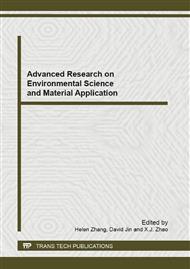p.238
p.242
p.246
p.250
p.256
p.261
p.265
p.269
p.273
Experimental Study on Fatigue Crack Propagation of Glare3-3/2 with Mechanics Properties
Abstract:
This study is to investigate the fatigue crack growth behavior of Glare3-3/2 under various stress levels. The Glare3-3/2 specimen consists of three 2024-T3 aluminum alloy sheets and two layers of glass/epoxy composite lamina. Tensile-tensile cyclic fatigue tests were conducted on centrally notched specimen at four stress levels with various maximum values. A digital camera system was used to take photos of the propagating cracks on both sides of the specimen. Image processing software was adopted to accurately measure the length of the cracks on each photo. The test results show that 1) Compared to 2024-T3 aluminum alloy, the fatigue properties of Glare3-3/2 are much better: under the same loading condition with maximum stress level of 120MPa, the crack growth rate of Glare3-3/2 is roughly 5% of the corresponding value of 2024-T3 aluminum alloy, while the fatigue life is 4 times higher than that of 2024-T3 aluminum alloy. 2) The maximum stress level shows strong influence on fatigue crack propagation behavior of Glare3-3/2. The value of steady state crack growth rate increases linearly, while the number of load cycles decreases exponentially, with respect to the maximum stress values used in the fatigue tests.
Info:
Periodical:
Pages:
273-278
Citation:
Online since:
November 2012
Authors:
Price:
Сopyright:
© 2012 Trans Tech Publications Ltd. All Rights Reserved
Share:
Citation:


